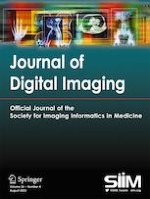Erschienen in:

02.05.2023
Automatic Spine Segmentation and Parameter Measurement for Radiological Analysis of Whole-Spine Lateral Radiographs Using Deep Learning and Computer Vision
verfasst von:
Yong-Tae Kim, Tae Seok Jeong, Young Jae Kim, Woo Seok Kim, Kwang Gi Kim, Gi Taek Yee
Erschienen in:
Journal of Imaging Informatics in Medicine
|
Ausgabe 4/2023
Einloggen, um Zugang zu erhalten
Abstract
Radiographic examination is essential for diagnosing spinal disorders, and the measurement of spino-pelvic parameters provides important information for the diagnosis and treatment planning of spinal sagittal deformities. While manual measurement methods are the golden standard for measuring parameters, they can be time consuming, inefficient, and rater dependent. Previous studies that have used automatic measurement methods to alleviate the downsides of manual measurements showed low accuracy or could not be applied to general films. We propose a pipeline for automated measurement of spinal parameters by combining a Mask R-CNN model for spine segmentation with computer vision algorithms. This pipeline can be incorporated into clinical workflows to provide clinical utility in diagnosis and treatment planning. A total of 1807 lateral radiographs were used for the training (n = 1607) and validation (n = 200) of the spine segmentation model. An additional 200 radiographs, which were also used for validation, were examined by three surgeons to evaluate the performance of the pipeline. Parameters automatically measured by the algorithm in the test set were statistically compared to parameters measured manually by the three surgeons. The Mask R-CNN model achieved an average precision at 50% intersection over union (AP50) of 96.2% and a Dice score of 92.6% for the spine segmentation task in the test set. The mean absolute error values of the spino-pelvic parameters measurement results were within the range of 0.4° (pelvic tilt) to 3.0° (lumbar lordosis, pelvic incidence), and the standard error of estimate was within the range of 0.5° (pelvic tilt) to 4.0° (pelvic incidence). The intraclass correlation coefficient values ranged from 0.86 (sacral slope) to 0.99 (pelvic tilt, sagittal vertical axis).











